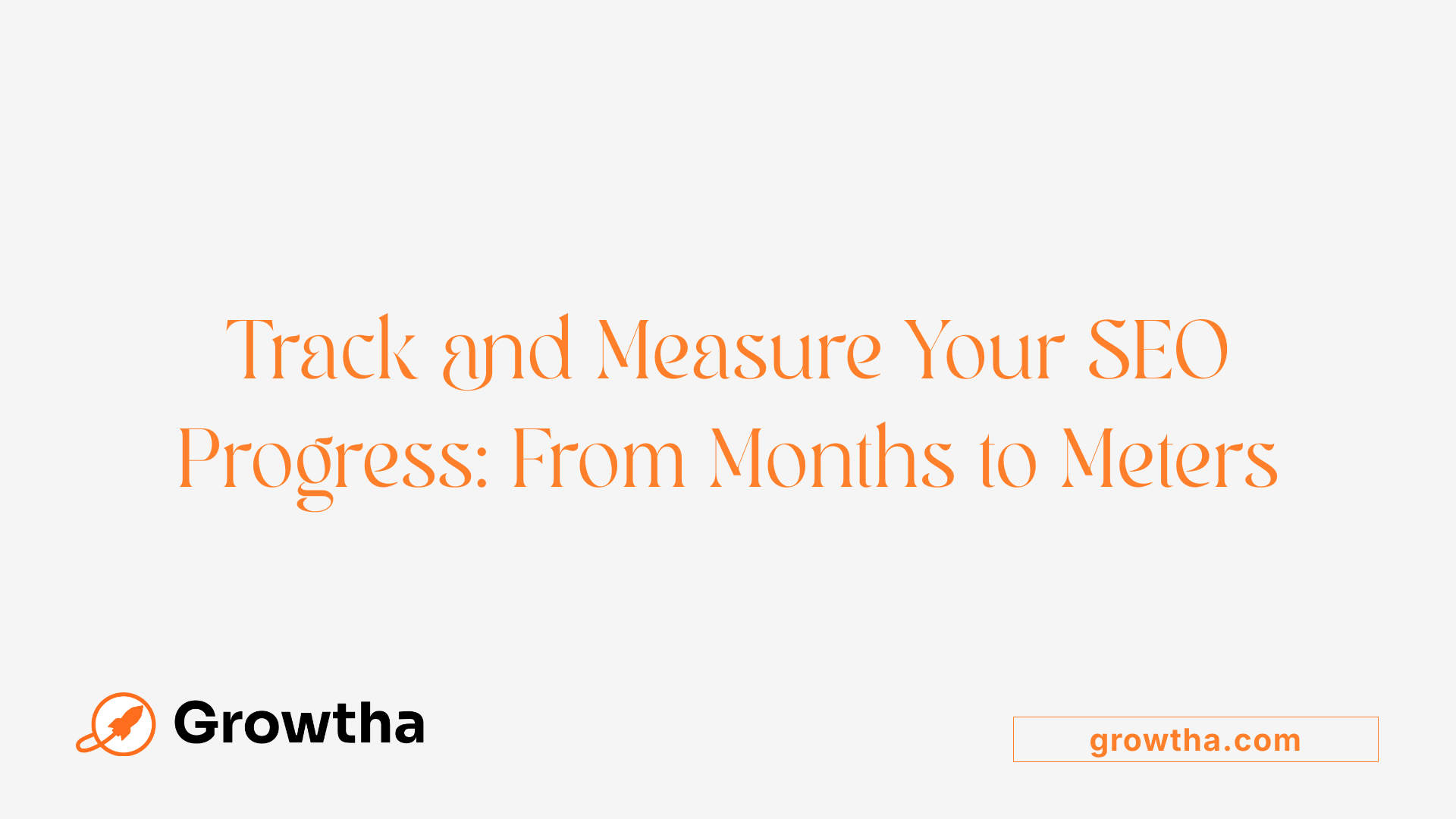How SEO Impacts Patient Acquisition
Unlocking Digital Growth: Strategies to Maximize Patient Intake


How SEO Impacts Patient Acquisition
The Rising Significance of SEO in Healthcare
In today’s digitally-driven healthcare landscape, SEO capabilities are crucial for practices aiming to attract and retain patients effectively. As over 75% of patients begin their health-related search on Google, establishing a robust online presence is more than a necessity—it's an imperative for growth and competitiveness. From local SEO strategies to health-specific content optimization, this article explores how healthcare providers can leverage SEO to maximize patient acquisition and secure long-term success.
The Core Importance of Healthcare SEO

Why is SEO important for healthcare practices?
SEO plays a vital role in the success of healthcare practices by increasing their visibility where patients are actively searching for services. With over 75% of people seeking health information online, appearing at the top of search results ensures that local patients find and choose your practice. High-quality content, genuine reviews, and authoritative backlinks help build trust and credibility, which are especially crucial given the sensitive nature of healthcare decisions.
Implementing local SEO strategies like optimizing your Google My Business profile, maintaining consistent NAP (Name, Address, Phone number) information across directories, and targeting local keywords help your practice appear in nearby searches. This local prominence is essential for attracting patients who prefer providers within their community.
From a cost perspective, SEO offers a sustainable, long-term solution for patient acquisition. It complements other marketing efforts, provides insights into patient search behavior via analytics tools, and allows practices to refine their marketing approaches based on real data. Ultimately, investing in healthcare SEO boosts your online presence, leads to more patient inquiries, and gives you a competitive edge in an increasingly crowded market.
| Aspect | Description | Importance |
|---|---|---|
| Patient Search Behavior | Most patients research health providers online. | Critical for visibility and contact points |
| Content & Authority | High-quality, medically accurate content and reviews establish trust. | Builds online credibility and trustworthiness |
| Local Search Optimization | Using Google My Business and local keywords targets nearby patients. | Drives targeted traffic and appointments |
| Cost-Effectiveness | SEO offers long-term benefits with ongoing ROI. | Ensures sustainable growth |
| Competitive Edge | A strong SEO presence differentiates your practice from others. | Gains more patient inquiries and loyalty |
In today’s digital age, healthcare SEO isn’t just an option; it’s a necessity for practices aiming to grow and succeed.
The Role of Local SEO in Patient Discovery

What role does local SEO play in attracting patients?
Local SEO is essential for healthcare practices to stand out in their local communities. It enhances online visibility, especially in results like the Google Map Pack, where many patients look for nearby providers. When a practice optimizes its local SEO, it appears more prominently when patients search using terms like 'doctor near me' or 'ENT specialist in [City]'.
A vital part of this process involves claiming and fully optimizing Google My Business (GMB) profiles. By providing accurate information, adding high-quality photos, and highlighting services, practices can improve their chances of appearing in local search results.
Managing online reputation through positive patient reviews also greatly impacts trustworthiness. Encouraging satisfied patients to leave reviews on platforms like Google and healthcare review sites builds credibility and attracts new patients.
Maintaining consistency in business details—such as name, address, and phone number (NAP)—across all online directories ensures search engines and patients trust the information, boosting local search rankings.
Moreover, leveraging local keywords that include geographic locations or neighborhood names helps connect the practice with specific communities. Pairing this with a mobile-optimized website ensures a seamless user experience, capturing the high volume of patients searching via smartphones.
Effective local SEO strategies contribute significantly to increasing website traffic, improving patient engagement, and securing more appointment bookings. It provides practices with a competitive advantage, especially as more healthcare consumers turn to digital search methods to find nearby providers.
Medical SEO: Targeting the Right Patients
What is medical SEO and how does it work?
Medical SEO helps healthcare practices improve their online visibility, making it easier for patients to find relevant services. It involves optimizing websites, content, and online profiles to rank higher in search results for local and informational keywords.
Practices begin with detailed keyword research to identify terms prospective patients are searching for, such as 'pediatric ENT in [City]' or 'sinus infection treatment.' By incorporating these keywords into website content, such as titles, headers, and blogs, practices can attract the right audience.
On-page optimization also includes ensuring website speed, mobile responsiveness, and logical site structure, which are crucial for better rankings and user experience. Creating dedicated location pages and publishing localized content helps search engines associate the practice with specific regions.
Optimizing Google My Business (GMB) profiles is a vital component. This involves claiming the listing, verifying details, adding high-quality photos, and encouraging patient reviews. Positive reviews and consistent NAP (Name, Address, Phone number) information across directories bolster local SEO performance.
Building quality backlinks from reputable healthcare websites further establishes authority and trustworthiness. This, combined with organic content and review management, allows practices to organically attract new patients without relying heavily on paid ads.
In summary, medical SEO integrates technical, content, and local strategies to increase visibility, enhance online reputation, and grow patient intake—making it an essential element for modern healthcare practices.
Timeline and Measurement of SEO Success

How long does it typically take for healthcare SEO efforts to show results?
In the realm of healthcare, SEO is a long-term investment. Usually, signs of progress begin to appear after about four to six months. For newer websites or those with low domain authority, it can take closer to a year to see significant improvements. This timeline depends on several factors including the depth of keyword research, website structure optimization, content quality, backlinks, and mobile optimization.
Creating a comprehensive plan that includes regular updates and adherence to Google's E-A-T (Expertise, Authoritativeness, Trustworthiness) standards is essential for sustained growth. External influences like search algorithm updates, seasonal trends in patient inquiries, and competition levels can also impact results.
Transforming a healthcare website's visibility requires patience, consistent effort, and a strategic approach that adapts over time. Staying committed to an ongoing SEO effort is crucial for long-term success in attracting new patients and strengthening online presence.
Enhancing Practice Growth through Search Optimization

How does SEO impact patient acquisition and practice growth?
Search engine optimization (SEO) plays a pivotal role in attracting new patients and expanding healthcare practices. By improving online visibility, SEO makes it easier for potential patients to find your services quickly when searching for relevant keywords such as 'doctor near me' or specific treatments like 'sinus infection specialist.'
Implementing local SEO strategies, including optimizing your Google Business Profile and ensuring consistent NAP (Name, Address, Phone number) information across online directories, helps your practice appear prominently in local search results and maps. This increased visibility boosts the chances of patients clicking through to your website.
High search rankings are a major driver of patient inquiries. Data shows that roughly 68% of search clicks go to top-ranking sites, underlining the importance of achieving and maintaining prominent positions on search engine results pages (SERPs). Quality content, relevant keywords, and positive reviews contribute to higher rankings, building trust and authority with prospective patients.
Utilizing analytics tools such as Google Analytics and SEMrush allows practices to monitor website performance, user behavior, and traffic sources. These insights inform ongoing adjustments to the SEO strategy, focusing on elements like page speed, mobile responsiveness, and content relevance.
Furthermore, a well-optimized website enhances user experience, encouraging visitors to schedule appointments or contact the practice. Regular content updates, educational blog posts, and patient testimonials help establish the practice as an authoritative and trustworthy provider.
Overall, comprehensive SEO efforts support long-term growth by increasing local reach, elevating search engine rankings, and improving patient engagement. This ongoing digital presence not only attracts new patients but also fosters loyalty and positive reputation expansion, ensuring sustained practice development.
Best Practices for Healthcare SEO Implementation
What are best practices for healthcare SEO to attract and retain patients?
Effective healthcare SEO involves a well-rounded strategy focused on several crucial areas. First, maintaining accurate and consistent Google Business Profiles ensures visibility in local searches, especially in the Local Pack. Regularly managing online reviews and encouraging patient testimonials build trust and credibility, influencing potential patients' decisions.
Content marketing rooted in medical expertise is vital. Developing high-quality, relevant content that addresses patient pain points and answers common questions improves organic search rankings. Utilizing targeted keywords, including long-tail and location-based terms, helps attract the right audience.
Technical website health cannot be overlooked. Optimizing site speed, mobile responsiveness, structured data, and ensuring easy navigation enhance user experience and meet Google’s ranking criteria. Employing schema markup and HTTPS security additionally boost trustworthiness.
Monitoring performance through analytics tools like Google Analytics guides continuous improvements. Regularly tracking metrics such as search rankings, traffic sources, and conversions allows adjustments that keep the practice competitive.
Consistency across all online platforms, adherence to privacy regulations such as HIPAA, and ongoing reputation management reinforce patient trust. By integrating these practices into daily operations, healthcare providers can attract new patients and foster long-term relationships in the digital space.
The Future of Healthcare SEO and Patient Engagement

How does SEO impact patient engagement in the future?
Healthcare SEO is set to become more influential in connecting practices with patients through advanced technologies. One major trend is the rise of voice search, which is making conversational queries — like asking, "doctor near me" — more common. Optimizing for voice can help practices appear in these natural language searches, increasing visibility.
AI integration is also reshaping how healthcare content is tailored to individual patients. By personalizing health tips, appointment reminders, and even answering FAQs through AI-powered chatbots, practices can build stronger, more personal relationships with patients.
As digital marketing continues to advance, adopting these innovations allows practices to meet patient expectations for quick, accessible, and customized healthcare information. This not only improves the patient experience but also encourages continued engagement.
However, with these technological enhancements comes the need for strict compliance with privacy laws like HIPAA. Protecting patient data while delivering personalized content is essential for maintaining trust.
Overall, the integration of SEO, AI, and voice search will make healthcare more accessible and engaging, fostering deeper trust and loyalty. Strategies that embrace these tools will likely see increased patient satisfaction and future growth in a competitive landscape.
Harnessing SEO for Sustainable Healthcare Growth
As healthcare practices face increasing digital competition, mastering SEO becomes essential for sustainable growth and patient acquisition. By implementing local SEO strategies, optimizing online content, leveraging analytics, and embracing technological innovations like AI, healthcare providers can significantly enhance their visibility and trustworthiness. A disciplined, ongoing SEO effort not only attracts new patients but also fosters loyalty and long-term engagement. In an era where online presence is integral to healthcare success, investing in comprehensive SEO strategies ensures practices remain competitive, trusted, and capable of thriving in the evolving digital landscape.
References
- Exploring the Impact of Local SEO on Patient Acquisition for Medical ...
- How to Leverage SEO to Drive Patient Acquisition and Satisfaction
- How to Harness the Power of SEO for ENT Practices - Direction Inc
- How Does Digital Presence Increase Patient Acquisition?
- Digital Health SEO: A Guide to Organic Patient Acquisition
- Medical SEO and Its Impact on Patient Acquisition | Surgeon's Advisor
- How Local SEO Drives Growth for Surgeons - Remedo
- How SEO Can Help Healthcare Practices Attract More Patients







